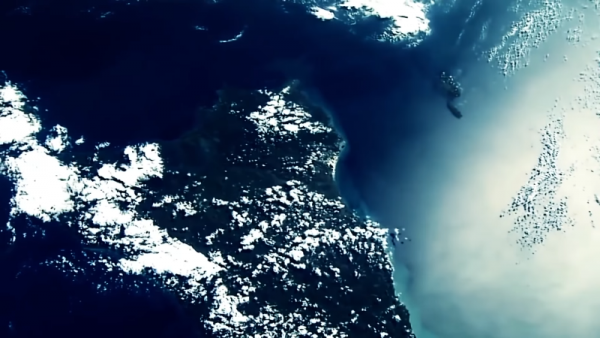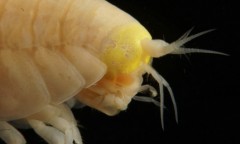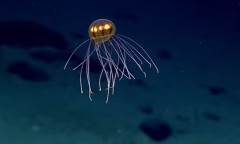By KM Diaz, | April 12, 2017

Mariana Trench is a vast underwater canyon and part of a subduction zone, located between the Philippine Sea and Pacific tectonic plates.
Researchers discovered new traces of life on earth six miles below the Mariana Trench. If these samples proved that life existed below the deepest place on Earth, it would be the deepest form of life ever found.
Mariana Trench is a vast underwater canyon and part of a subduction zone, located between the Philippine Sea and Pacific tectonic plates. The area of the seafloor surrounds with mud volcanoes, hydrothermal vents, and other materials the deep Earth.
Like Us on Facebook
Researchers found new traces of organic material from mineral-rich mud in a mud volcano near the Mariana Trench. The research team did not find any intact microbes. However, they observe that the organic material may be able to support life even in the extreme environments. The findings imply that this organic material may be a sign that microbes are alive even in the deepest place on Earth.
Oliver Plümper, the study leader and researcher at the Netherlands' Utrecht University, believes that the discovery is a hint about the deep biosphere on Earth. It could be either huge or small, but something's going on that scientists do not understand as of the moment.
The research team analyzed the organic material found in the serpentine. It is a combination of olivine in the upper mantle with water stirred up within the subduction zone. It will produce methane and gas for microbes to use as a source of foods and forms an environment in the seafloor hydrothermal vents. The process is known as serpentinization.
Frieder Klein, a researcher that studies serpentinization at the Woods Hole Oceanographic Institute, suggests that the organic material indicates life, although it is still unclear where the source of life is. But it is also possible that the organic material was made even without the help from biology.
The scientists started searching for serpentinization back in the 1960s. They found it where continents crash together and the molten margins, at hydrothermal vents, and within mountain ranges. Serpentinization has recognized since then because of its potential to support extreme life-forms and caught the attention of those who are looking for life forms on another planet.
-
Use of Coronavirus Pandemic Drones Raises Privacy Concerns: Drones Spread Fear, Local Officials Say

-
Coronavirus Hampers The Delivery Of Lockheed Martin F-35 Stealth Fighters For 2020

-
Instagram Speeds Up Plans to Add Account Memorialization Feature Due to COVID-19 Deaths

-
NASA: Perseverance Plans to Bring 'Mars Rock' to Earth in 2031

-
600 Dead And 3,000 In The Hospital as Iranians Believed Drinking High-Concentrations of Alcohol Can Cure The Coronavirus

-
600 Dead And 3,000 In The Hospital as Iranians Believed Drinking High-Concentrations of Alcohol Can Cure The Coronavirus

-
COVID-19: Doctors, Nurses Use Virtual Reality to Learn New Skills in Treating Coronavirus Patients











